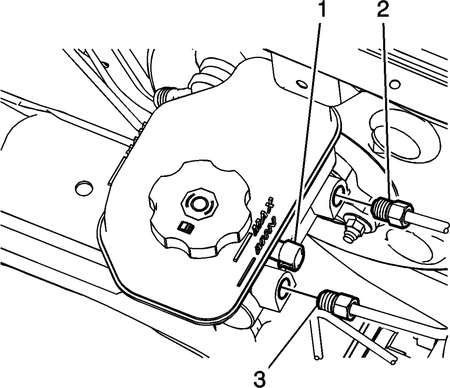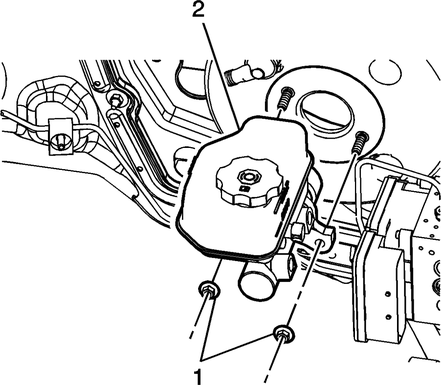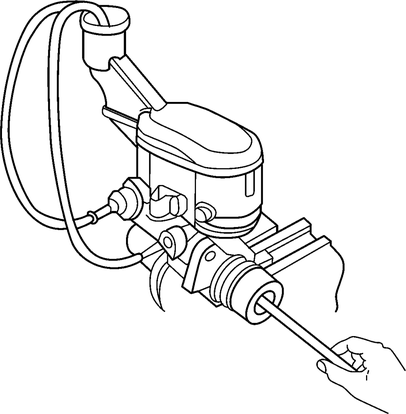| 1. |
Secure the mounting flange of the brake
master cylinder in a bench vice so that the rear of the primary
piston is accessible. |
| 2. |
Remove the cap from the hose nipple
on the master cylinder reservoir. |
| 3. |
Install suitable fittings to the master
cylinder ports that match the type of flare seat required and also
provide for hose attachment. |
| 4. |
Install transparent hoses to the fittings
installed to the master cylinder ports, then route the hoses into
the master cylinder reservoir, Fig. 3. |
| 5. |
Ensure that the ends of the transparent
hoses running into the master cylinder reservoir are fully submerged
in the brake fluid. |
| 6. |
Using a smooth, round-ended tool, depress
and release the primary piston as far as it will travel, a depth
of about one inch, several times. Observe the flow of fluid coming
from the ports. As air is bled from the primary and secondary pistons,
the effort required to depress the primary piston will increase
and the amount of travel will decrease. |
| 7. |
Continue to depress and release the
primary piston until fluid flows freely from the ports with no evidence
of air bubbles. |
| 8. |
Remove the transparent hoses from the
master cylinder reservoir. |
| 9. |
Install the cap to the hose nipple
on the reservoir, to prevent fluid loss and contamination. |
| 10. |
Remove the fittings with the transparent
hoses from the master cylinder ports. Wrap the master cylinder with
a clean shop cloth to prevent brake fluid spills. |
| 11. |
Remove the master cylinder from the
vice. |
|



 Brake Line R&R
Brake Line R&R Brake Master Cylinder Reservoir R&R
Brake Master Cylinder Reservoir R&R